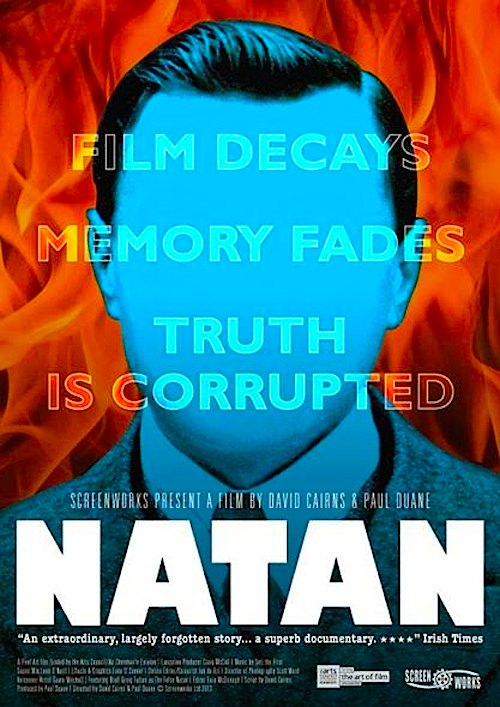Natan – Trailer from screenworksfilmandtv on Vimeo.
By Joe Benel. Bernard Natan (born Natan Tannenzaft) should have been the Louis B. Mayer of France and for a while he was. Unfortunately, a Jewish mogul helming the storied Pathé film studio was more than the French establishment could handle. With the help of a dubious “whistleblower” and an unfortunate secret in his past, the French media destroyed Natan’s reputation and largely erased him from the cinema history books. David Cairns & Paul Duane defend the groundbreaking producer from malicious slander and historical neglect in their expressionistic documentary Natan, which screens during the 2015 New York Jewish Film Festival.
Since Natan lived in 1930s France and his doc was selected by the NYJFF, you can probably guess why he is not capable of defending himself. He did indeed perish in a German concentration camp, after the French authorities eagerly deported him, but there is far more to the story than that.
Natan was a Romanian Jew, who became a naturalized French citizen after honorably serving his adopted country in WWI. He had an instinctive affinity for motion pictures, scuffling his way from a projectionist and lab technician to a scrappy mini-magnate, who acquired the famous Pathé brand when Charles Pathé decided to liquidate rather than deal with the advent of sound. Unfortunately, while he was still a desperately poor immigrant, Natan was convicted of peddling dirty movies. Much will be made of this later, to the detriment of Natan’s historical standing.
 Even though it is the last thing Natan would probably want, his docu-exoneration will make you despise the French. It will not do much for most viewers’ estimation of film historians either, particularly those that specialize in “stag films.” Frankly, as screenwriter, Cairns thoroughly persuades the audience to consider Natan a mid-Twentieth Century Job, who was done wrong by nearly all quarters.
Even though it is the last thing Natan would probably want, his docu-exoneration will make you despise the French. It will not do much for most viewers’ estimation of film historians either, particularly those that specialize in “stag films.” Frankly, as screenwriter, Cairns thoroughly persuades the audience to consider Natan a mid-Twentieth Century Job, who was done wrong by nearly all quarters.
Especially mind-blowing is the role of a rather unsavory figure named Robert Dirler, who wormed his way onto the Pathé board to undermine Natan, despite his criminal record and suspicious German connections. That last part gives one pause, does it not? To their credit, Cairns & Duane do not overplay the conspiracy card, but the shadowy Dirler clearly merits further research.
The film also uses various stylistic strategies that are likely to be divisive. Cairns & Duane often depict exaggerated re-enactments from Natan’s life, featuring the producer with a large papier-mâché head, largely modeled on National Socialist propaganda, including a famous exhibit in occupied Paris, prominently featuring Natan. It is somewhat distractingly surreal at times, but there is an underlying point to it. In fact, it makes Natan considerably more distinctive visually than most documentaries.
The eerily sensitive score by Irish Alt band Seti the First further distinguishes the production. Cairns & Duane also incorporate plenty of clips from Natan’s acknowledged classics, such as Marco de Gastyne’s La Merveilleuse Vie de Jeanne d’Arc, but aside from Serge Bromberg (admittedly quite the fitting expert commentator), the French cinema establishment is largely absent. It just makes them look all the worse. In a mere sixty-seven minutes, the film assembles a damnably convincing case that inspires rage and sorrow in equal measure. Anyone who takes cinema seriously as an artistic and commercial endeavor really should see it. Highly recommended, Natan screens twice this Wednesday (1/28) at the Walter Reade Theater (with How to Break Into Yiddish Vaudeville) as part of this year’s NYJFF.
LFM GRADE: A-
Posted on January 25th, 2015 at 2:57pm.